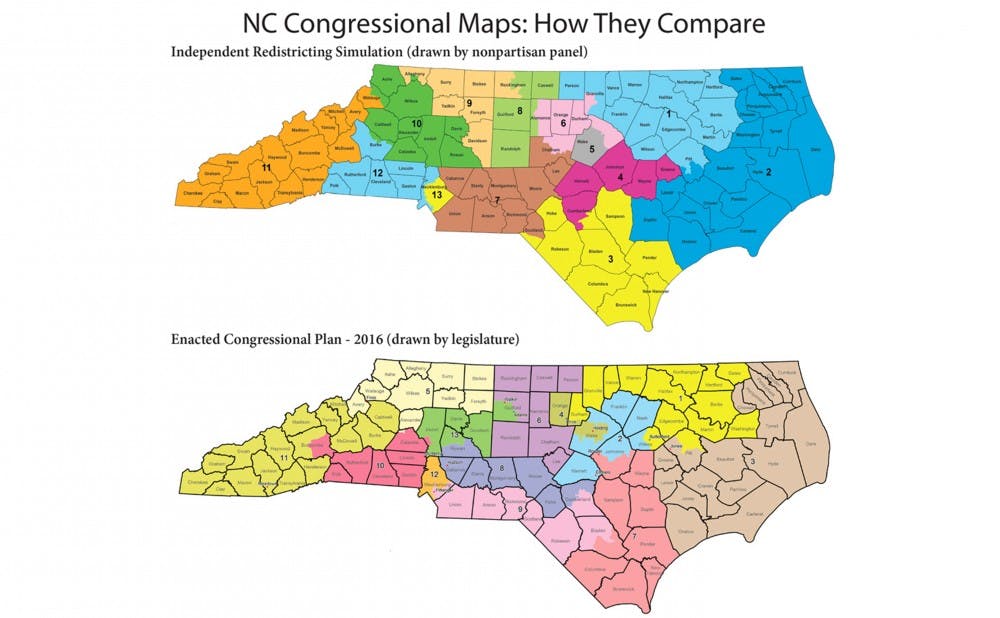A nonpartisan panel of 10 retired North Carolina judges released an unofficial congressional map Monday in an effort to demonstrate the importance of independent congressional redistricting.
This new congressional map wraps up a redistricting simulation that started in April and was co-sponsored by the Sanford School of Public Policy and Common Cause North Carolina. Thomas Ross—former president of the University of North Carolina system and currently the Terry Sanford distinguished fellow at Duke—advised the judges during the simulation.
“The group of judges—half of them are Democrats and half of them are Republicans—came together and prepared a mock congressional redistricting map,” Ross said. “They did so without considering party registration or voting history so it was a very nonpartisan effort. And I think they produced very compact districts as well as more competitive districts.”
Having competitive districts allows elected government officials to be held more accountable to their voters, Ross said. This is in contrast to gerrymandered districts, where legislators have drawn districts to specifically benefit one party.
“If districts are not intentionally gerrymandered to support one party or another, the districts that are drawn without regard to party politics are more competitive,” Ross said. “I think that is important for democracy to function well because it gives voters a real voice that matters in elections.”
A federal court determined earlier in February that two of North Carolina’s 13 congressional districts had been unconstitutionally gerrymandered along racial lines. There were ten safely Republican districts and three likely Democratic seats in that map, John Aldrich—Pfizer-Pratt professor of political science—explained at the time.
The court’s ruling forced the General Assembly to redraw districts, which it did later in the month after the Supreme Court declined to delay the decision. As a result, Congressional primaries were moved from March to June. The Supreme Court will take up the case this term to evaluate the state’s original map. Common Cause North Carolina recently filed another lawsuit challenging the state’s redrawn districts as partisan gerrymanders. In 2014, Democrats won 44 percent of the congressional vote in North Carolina while only three of 13 seats.
Earlier this month, a panel of three federal judges struck down the state’s legislative districts as racial gerrymanders the and told the General Assembly to redraw those maps next year.
The judges’ unofficial map has six likely Republican districts, four likely Democratic districts and three districts that could go to either party. The map struck down in February had no districts that would be considered toss-ups.
Under the proposed map, Durham County would be entirely in one district, along with Orange and portions of Alamance, Chatham and Granville counties. Durham is currently split into two congressional districts—the first and the fourth—in the new map drawn by the legislature. The old map split Durham four ways.
Jonathan Mattingly, professor of mathematics and statistical science, said in drawing the unofficial map, judges focused on populations, what they knew about the state of North Carolina and compliance with the Voting Rights Act. The judges also prioritized not splitting counties and keeping districts compact.
“The primary challenge is to get political self-interest out of it and worry more about the health of our democracy and less about winning,” Mattingly noted.
Ross added that he hopes students could potentially be involved in drawing legislative districts. Mattingly leads a group of Duke students doing their own studies of independent redistricting.
“The group found that they were very capable of doing this in a fairly apolitical way,” Mattingly said.

